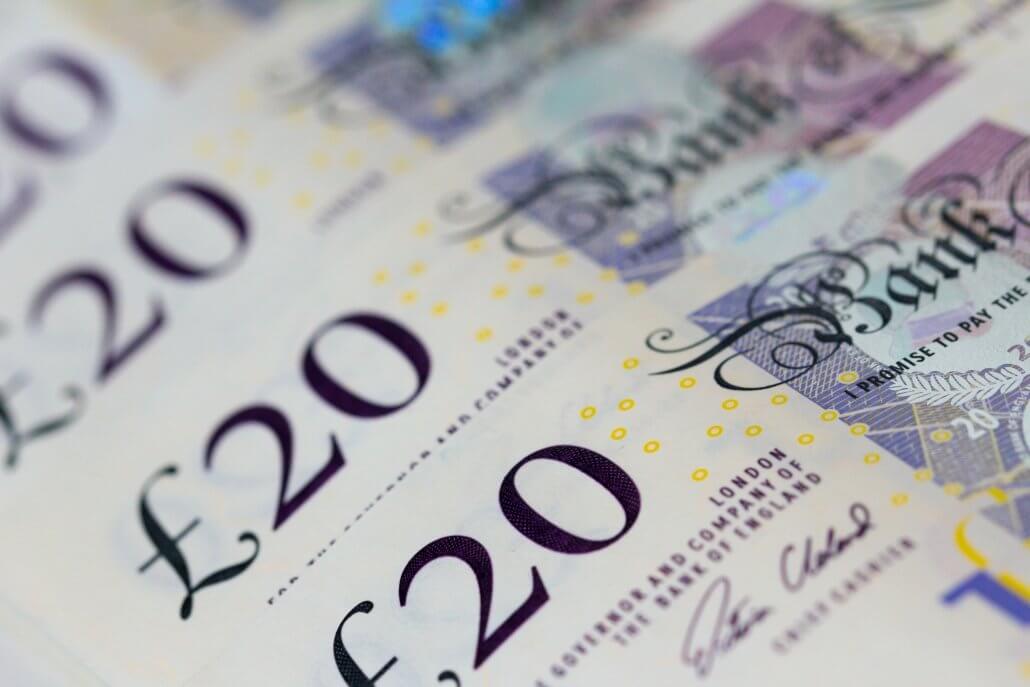A complete guide to foreign exchange risk management
The recent collapse of Greensill and Archegos Capital Management and the financial impacts this had on several major banks have highlighted just how detrimental it is to not have a solid risk management strategy within financial services.
With the economic climate constantly evolving due to the uncertainty of the COVID-19 pandemic, it has become more crucial than ever to form a concrete risk management strategy when it comes to foreign exchange (FX).
Whilst coronavirus vaccines are helping improve the global economic outlook; countries are still seeing significant spikes in infections which can create sudden impacts across currency markets.
For the foreseeable future, the existence of COVID-19 will continue to create market volatility. However, it is possible to protect yourself from fluctuating exchange rates by seeking advice from a foreign exchange specialist.

What is foreign exchange risk?
Foreign exchange risk concerns the significant financial losses which can occur when sending and receiving international payments. With currencies constantly fluctuating, especially the US dollar, forex’s biggest currency – the value of your investment can swiftly decline due to poor exchange rates. As a result, businesses and individuals use FX hedging strategies to mitigate their foreign exchange risk.
What is FX hedging?
FX hedging involves several strategies to help save time and money when sending international payments to ensure fluctuating currencies do not impact transfers. All FX hedging strategies revolve around sending payments at the right time to avoid any significant financial losses.
Forward trades
Forward trades are the most used FX hedging strategy and are particularly useful for future business transactions. The strategy allows businesses to ‘lock in’ an exchange rate and settle the trade up to 12 months in the future.
For example, a British business importing goods from Australia could be required to pay AUD 100,000 in a year’s time. The current British pound to Australian dollar (GBP/AUD) current stands at AUD 1.80, which equates to GBP 55,555.56. However, due to constant currency fluctuations, an extreme shift in the exchange rate could significantly increase your inventory costs, meaning potentially substantial hits to your bottom line. A forward trade will help you avoid this scenario, allowing you to buy AUD 100,000 in a year’s time at today’s exchange rate.
Spot rates
Spot rates are an efficient way to make payments on the same day or within a few days. A foreign exchange specialist can work with you to help identify the best time to make your currency transfer and get the most out of your exchange rate.
Automated orders
Automated orders let you set your ideal exchange rate, with the trade only completing once the rate has hit your specified level. This option allows you to protect your rate and saves you from constantly monitoring exchange rates.
Regular currency trades
Regular currency trades are the best way to send regular currency transfers and are a fast and convenient foreign exchange solution. The payments can be set up in advance and sent at a time to suit you.
Types of foreign exchange risk
Foreign exchange risk consists of various risk factors, which all companies must be mindful of when conducting business with other countries using foreign currency.
Transaction risk
Transaction risk is where firms purchase products from a business in a different country, with the price sold in the seller’s currency. If the currency of the selling firm appreciates from the currency of the buying firm, this will mean the buyer will have to pay significantly more when making a purchase.
Translation risk also occurs when a trading company has different branches located in other countries. Such businesses must convert profits from the foreign currency into the parent company’s local currency for accounting purposes. The risk concerns how much the foreign assets fluctuate based on the exchange rate volatility between the two counties.
Economic risk
Economic risk is also referred to as forecast risk and is where a business’s market value is incessantly impacted by inevitable exposure to currency fluctuations.
Identifying foreign exchange risk
Many small to medium-sized enterprises (SME) believe that foreign exchange risk is only for large corporations. However, studies conducted by accountancy body ACCA found that over 80% of SME’s had experienced significant losses due to market volatility.
Whilst it’s crucial to take a proactive approach within foreign exchange risk management, many companies take a reactive approach, responding to the risk after the financial damage has been done.
Taking a proactive approach when assessing foreign exchange risk means identifying potential exposures within your business beforehand. Whilst this may sound like a simple process, some foreign exchange exposures can be challenging to identify. An example would be potential risks within your supply chain. Even if you buy and sell products in the same currency, some suppliers may base their calculations using the value of another currency, which you may need to factor into your risk management strategy.
It’s also vital to thoroughly examine the data on your balance sheet to help identify potential exposures. For example, a manufacturing business may regularly purchase equipment from a foreign firm and be required to pay in euros (EUR).
Observing how your business operates can also help mitigate financial risks. There may be times of the year where foreign purchases are made, which can help you identify the sensitivity of your profit margins to currency fluctuations.
Mitigating foreign exchange risk
For start-up businesses assessing foreign exchange risk management, it may be beneficial during the early stages to keep your products in your local currency. This option, therefore, transposes potential foreign exchange risk onto your customers.
However, this strategy can still pose other risks to your company, such as customers abandoning their purchases if the product is not in their local currency.
As a result, offering products in multiple currencies could help businesses increase sales, with your products available to a broader customer range. Naturally, this option incurs more work, such as opening a foreign bank account, assessing the cost of products in each currency, dealing with currency conversions and monitoring exchange rates.
To factor in the additional work when selling in different currencies, there is the option of increasing product prices across the board. Whilst this tactic can help cover the potential financial impacts of market volatility, it also makes your products less competitive.
Using a foreign exchange specialist
Running your business whilst constantly monitoring exchange rates can be problematic, as the focus is detracted from other vital business areas. Using the help of a foreign exchange specialist such as Halo Financial is a much more sustainable option as it allows your business to save time and money and focus on other areas of priority.
Our currency specialists will work with you to learn how your business operates so we can decipher the best foreign exchange risk management strategy to suit your needs.
At Halo Financial, we understand that every business is different and will provide a tailored risk management solution to help protect your company against fluctuating currencies.
Using one of the previously mentioned FX hedging strategies above, you can trade with confidence, knowing that we will always help you secure the best exchange rates possible within an economic climate that is constantly evolving.

Strong UK PMI data fails to boost GBP
The release of positive UK retail sales and manufacturing PMI data has done little to help the British pound (GBP) recover its losses against the euro (EUR) and US dollar (USD) this week.
UK composite PMI for April has shown a reading of 60.0, which is above the 58.6 that economists expected. The composite UK manufacturing PMI reading for April is 60.7, which is also stronger than the forecasts of 59.0. Meanwhile, UK services PMI stands at 60.1 in comparison to the 59.0 that was predicted.
The better-than-expected figures for the UK are not surprising, given the reopening of non-essential businesses on 12th April, which is helping improve the UK’s economic outlook.
Despite the positive data, the British pound (GBP) is continuing to dip against its key currency competitors. The British pound to euro (GBP/EUR) exchange rate currently stands at EUR 1.1515, whilst the British pound to US dollar (GBP/USD) exchange rate is currently trading at USD 1.3886.
Jeremy Thomson-Cook, Head of FX Strategy at Equals Money, says, “our fears that strong UK data is wasted during a period of market uncertainty are totally founded and therefore, Sterling gains from signs that the UK economy is outpacing its European counterparts may not be as easy to come by.”
Economists have highlighted the importance of this week’s sufficient UK data, as it indicates that the UK economy is on the path to recovery and on track to see the firm rebound that was forecast for Q2.
Today’s trading session saw London’s FTSE 100 slip 0.56% lower to 6,899.50, along with declining industrial stocks. Data reveals that the FTSE 100 has gained 7.2% this year due to growing economic optimism. However, significant declines could be on the horizon as a result of rising coronavirus cases across Asia.
This morning also saw the release of the UK’s spending deficit, which stands at GBP 303 billion, a post-war record, though under the GBP 327 billion that was predicted.
The Office of National Statistics (ONS) stated that the latest figure is a result of extra funding for government-led coronavirus support schemes as well as reduced cash receipts and a fall in UK gross domestic product (GDP).












